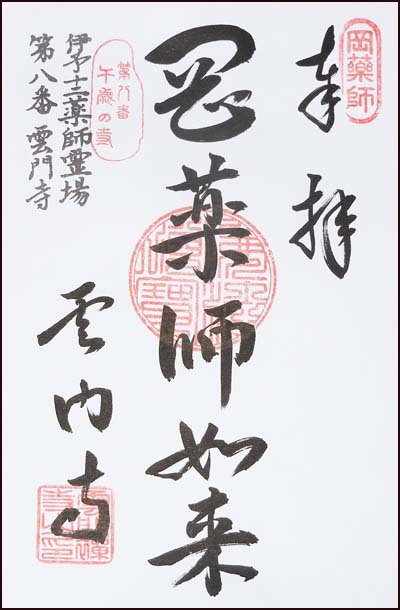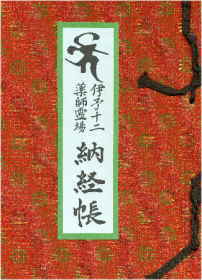[ . BACK to DARUMA MUSEUM TOP . ]
. - - - PERSONS - ABC-LIST of this BLOG - - - .
::::::::::::::::::::::::::::::::::::::::::::::::::::::::::::::::::::::::::::::::::::::::::::::::::::::::::::::::::::::::::::::::::::::::::::::::::::::::::::::::::::::::::::::::
Famous Buddhist Priests - ABC-List

日本の名僧・高僧 88人
doogoo 道号 "Name of the Way" after a person entered priesthood
Some priests have their name as a kigo for Haiku.
. Introducing Japanese Haiku Poets and People .
Many of them already have their own page and are mentioned in boldface.
Check the ABC-List of this BLOG.
::::::::::::::::::::::::::::::::::::::::::::::::::::::::::::::::::::::::::::::::::::::::::::::::::::::::::::::::::::::::::::::::::::::::::::::::::::::::::::::::::::::::::::::::
Abutsu ni 阿仏尼 あぶつに Nun Abutsu-Ni (? - 1283)
Ankokuji Ekei 安国寺恵瓊 (1539 – 1600)
Baisan Monpon 梅山聞本 (?- 1417)
Bankei Yōtaku 盤珪永琢 Yotaku (1622 - 1693)
Banna 鑁阿 (ばんな) (1144 - 1199) (262)
Benkei, Musashibō Benkei 武蔵坊弁慶 Musashibo Benkei (1155–1189)
Chōgen, Choogen 重源 (1121 - 1206), Chogen, also known as Shunjōbō Chōgen 俊乗坊重源
Doogen 道元 Dogen Zenji (1200 - 1253)
Dookyoo 道鏡 Dokyo (? - 772)
Dooshoo 道昭 Dosho (629 - 700)
Eji 恵慈 えじ Eji (?~623?), Korean: Hyeja
He was a tutor of Buddhism to Shōtoku Taishi.
Eikan 永観 Eikan (1032 - 1111)
Eisai (Yoosai) 栄西 Eisai 1141 - 1215)
Eizan Shookin 瑩山紹瑾 Eizan Shokin (1268 - 1325)
Eizon 叡尊 Eizon (1201 - 1290)
Enchin 円珍 / 圓珍 Enchin (814 - 891)
Enkan 円観 Enkan (1281 - 1356)
Enkuu, Enkū 円空 Enku (1632 – 1695)
Enni 円爾 Enni (1202 - 1280)
Ennin 円仁 Ennin Jigaku Daishi 慈覚大師 (794 - 864)
En no Ozune, Gyōja 役小角 En no Gyoja (634 - 706)
Ensai 円載 Ensai (? - 877)
Eshin Ni 恵信尼 Nun Eshin-Ni (1182 - ?1268)
Fukuda Gyookai 福田行誡 Fukuda Gyokai (1806 - 1888) (366)
Ganjin 鑑真 Ganjin / Jianzhen (688 - 763) Chinese monk
Gasan Jōseki, Jooseki 峨山韶碩 Gasan Joseki (1275 – 23 November 1366)
Genboo 玄肪 Genbo (? - 746)
Genshin 源信 Genshin (942 - 1017) (124)
Gesshoo 月照 Gessho (1813 - 1858) (354)
Getsushoo 月性 Getsusho (1817 - 1858) (352)
Gidoo Shuushin 義堂周信 Gido Shushin(1325 - 1388)
Gien 義淵(ぎえん) (? - 728)
Gudō Toshoku, Gudoo 愚堂東寔 Gudo Toshoku (1577 – 1661)
Gyooki 行基 Gyoki Bosatsu (668 - 749)
Gyooson, Gyōson 行尊 Gyoson (1057 - 1135) (136)
Hakuin Zenji 白隠禅師 Hakuin Ekaku (1686 - 1768)
Henjoo 遍昭 Henjo (816 - 890)
Hoonen 法然 Honen (1133 - 1212)
Hōzōin In'ei, Hoozoo-in 宝蔵院胤栄 Hozoin In-Ei (1521 – October 16, 1607)
Ikkyuu Soojun 一休宗純 Ikkyu Sojun (1394 - 1481)
Ingen 隠元 Eisai Zenji 栄西禅師 (1141 - 1215)
Ippen 一遍 Ippen (1239 - 1289)
Issan Ichinei 一山一寧 Issan(1247 - 1317)
Isshi Monju 一糸文守 Monju (1608 - 1646)
Jakuren 寂蓮 Jakuren (1139 - 1202)
Jakushin 寂心 Jakushin (? - 1001) (120)
Jien 慈円 Jien (1155 - 1225)
Jitchū, Jitchuu 実忠 Jitchu (? - 824)
Jiun 慈雲 Jiun (1718 - 1804)
Junjoo 俊ジョウ(草冠にイ乃) (1166 - 1227)
Juubin 守敏 Jubin (? around 800)
Juugen 重源 Jugen (1121 - 1206) - see Choogen
Kaisen Jooki 快川紹喜 Kaisen Joki (? - 1582) (268)
Kakuban 覚鑁 Kakuban (1095 - 1143)
Kakunyo 覚如 Kakunyo (1270 - 1351)
Kakushin Ni 覚信尼 Nun Kakushin Ni (1224 - 1283)
Kakuyuu 覚猷 Kakuyu (1053 - 1140) (鳥羽僧正 Toba Sojo)
Kangan Giin 寒巌義尹 Kangan (1217–1300)
Kanjoo 寛朝 Kanjo (?916 - 998)
Kawaguchi Chiekai 河口慧海 Kawaguchi Chiekai (1866 - 1945) (370)
Keichuu 契沖 阿闍梨 Keichu Ajari (1640 - 1701)
Kanzan Egen 開山慧玄 Kanzan(1277 - 1360)
Kenkai 兼海 Kenkai (1107 - 11 June 1155)
Kennyo 顕如 Kennyo (1543 - 1592) (276)
Kinkoku Shoonin 金谷上人 Saint Kinkoku Shonin (1761 - 1832) (316)
Kokan Shiren 虎関師錬 Kokan(1278 - 1346)
Kookei, Koogei, Kōkei 皇慶 Kokei (?977 – 1049)
Kooen 皇円 Koen (? - ?1169)
Koogon 光厳法皇 Kogon Ho-O(1313 - 1364)
Kōsai, Koosai 幸西 Kosai (1163 – May 20, 1247)
Koun Ejō 孤雲懐奘 Ko-Un (1198 - 1280)
Kuukai 空海 弘法大師 Kukai Kobo Daishi (774 - 835)
Kuuya 空也 Saint Kuya (903 - 972)
Kyoonyo 教如 Kyonyo (1558 - 1614)
Mansai 満済 Mansai (1378 - 1435) (246)
Minchuu 明兆 Minchu (1351 - 1431)
Mokujiki 木喰五行 Mokujiki Gogyo (1718 - 1810)
Mokujiki Oogo 木食応其 Mokujiki Ogo (1536 - 1608)
Mokujiki Tanshoo 木喰但唱 Mokujiki Tansho (? - 1641)
Mongaku 文覚 Mongaku (?1193 - ?1205)
Monkan 文観 Monkan (1278 - 1357)
Mugaku Sogen 無学祖元 Mugaku, Wuxue Zuyuan (1226 - 1286)
Mujū Dōkyō, Mujuu Dookyoo 無住道曉 Muji Dokyo (1 January 1227 - 9 November 1312)
Musoo Soseki 無窓疎石 Muso Soseki (1275 - 1351)
Myooe, Myōe 明恵 Myoe, Myo-E (1173 - 1232)
..............................................................................................................................................
. boozu 坊主 priest, お坊さん O-Bo-San .
oshoo 和尚 priest
nyuudoo 入道 Nyudo priest
shoonin, shônin 上人 saint, head priest of a temple
daitoko 大徳(だいとこ)daitoku だいとく priest of high standard
soojoo. sôjô 僧正 high-ranking priest, "archbishop"
meisoo 名僧 famous priest / monk
koosoo 高僧 high-ranking priest

Photo by Tamamura Kōzaburō (1856 - 1923)
..............................................................................................................................................
- - - many priests with names starting with NICHI belong to the Nichiren sect - - -
Nichigen, Buzen Nichigen 豊前日源 (?1263 – 1315)
Nichiji 日持 (Kaiko) (February 10, 1250 – ?1304)
Nichijin 日陣 Nichijin (May 30, 1339 - June 14, 1419)
Nichiken, Awaji Nichiken(淡路日賢 (1243–1338)
Nichimoku 日目 Nichimoku (1260 – 1333)
Nichiō, Nichioo 日奥 Nichio, NichiO (1565 – 1630)
Nichiren 日蓮 Saint Nichiren (1222 - 1282)
Nichiroo, Nichirō 日朗 Nichiro (1243 - 1320)
Nichizoo, Nichizō 日像 Nichizo(1269 - 1342)
Nikkō, Nikkoo 日興 Nikko (1246 –1333)
Nikoo, Minbu Nikō 民部日向 Mibu Niko (1253 - 1314)
Ninshoo 忍性 Ninsho (1217 - 1303)
Nisshin 日親 Nisshin(1407 - 1488)
Nisshō, Nisshoo 日昭 Nissho, (?1221 – 1323)
Nitchō, Nitchoo 日頂 Nitcho (1252 – April 19, 1317)
Nomura Moto Ni 野村望東尼 Nun Nomura Motoni (1806 - 1867) (350)
Noonin, Dainichibō Nōnin 大日房能忍 Nonin ( ? 1190)
..............................................................................................................................................
Ootagaki Rengetsu, Ōtagak 太田垣蓮月 Nun Otagaki Rengetsu (1791 - 1875)
Ootani Kooen Kubutsu 大谷光演 / 大谷句仏 Otani Koen (1875 - 1943)
Raigoo 頼豪 Raigo (1002 - 1084)
Rankei Dooryuu 蘭渓道隆 Rankei Doryu (1213 - 1278)
Rennyo 蓮如 Rennyo (1415 - 1499)
Rensei / Renshoo 蓮生 れんせい・れんじょう Rensho / Renjo (1141 - 1208)
Rooben, Rōben 良弁 Roben (689 - 773)
Ryoogen 良源 Ryogen (912 - 985) (116)
Ryookan 良寛 Ryokan, Taigu 大愚 (1758 - 1831)
Ryoonin 良忍 Ryonin (1073 - 1132)
Ryuukoo 隆光 Ryuko (1649 - 1724)
Saichoo, Saichō 最澄 伝教大師 Saicho Dengyo Daishi (767 - 822)
Saigyoo Hooshi 西行法師 Saigyo Hoshi (1118 - 1190)
Sakuden 策伝 Sakuden (1554 - 1641)
Sengai 仙厓義梵 Sengai Gibon (175 1– 1837)
Sengaku 仙覚 Sengaku (?1203 - 1273)
Sesson Shuukei 雪村周継 Sesson (1504 - 1589)
Sesshuu 雪舟等楊 Sesshu Toyo (1420 - 1506)
Setouchi Jakuchō, Jakuchoo 瀬戸内寂聴 Nun Setouchi Jakucho (May 15, 1922 - )
Shimaji Mokurai 島地黙雷 Shimaji (1838 - 1911) (368)
Shinnyo 真如 Shinnyo 親王 (799 - 865) (132)
Shinran 親鸞 Shinran (1173 - 1262)
Shinshō, Shinshoo 真紹 Shinsho (797 – 873)
Shooboo 聖宝 Shobo (832 - 909)
Shoodoo 勝道 Shodo (735 - 817)
Shōkū, Shookuu 証空 Shoku (1177 - 1247), Seizan 西山
Shunkan 俊寛 Shunkan (c. 1143 – 1179)
Shunoku myooha 春屋妙葩 Shunoku Myoha(1311 - 1388)
- - soohei, sōhei 僧兵 Sohei, lit. "monk warriors", fighting monks
Suuden, Konchi-In Suuden 金地院崇伝 / Ishin Sūden 以心崇伝 Suden (1569 - 1633)
Suzuki Shosan 鈴木正三 Shosan (1579 - 1655) (288)
Suzuki Shunryū, Shunryuu 鈴木俊隆 Suzuki Shunryu (1904 - 1971) Zen
Taichō, Taichoo 泰澄 Taicho (July 20, 682 – April 20, 767)
Taigen Suufu 太原崇孚, 太原雪斎 Taigen Sessai (1469 - 1555) (266)
Taihan 泰範 (?817 ) disciple of Kukai (96)
Takeda Motsugai 武田物外 Takeda Motsugai (1795 - 1867)
Takuan, Takuan Sōhō 沢庵宗彭 Takuan Soho (1573 – 1645)
Tenkai 天海 Tenkai (1536 – 1643) / Nankōbō Tenkai 南光坊天海
Tettsū Gikai, Tettsu 徹通義介 Tetsu Gikai (1219 - 1309)
Tokuitsu 徳一 Tokuichi, Toku-Itsu (781? - 842?)
Uda Hoo-oo 宇多法皇 Uda Ho-O (879 - 931)
Yasutani Hakuun 安谷白雲 Yasutani Haku-Un (1885 - 1973) Kamakura Zendo
Yootaku, Bankei Yōtaku 盤珪永琢 Yotaku (1622 - 1693)
Yuien 唯円 Yuien,Yui-En (1222 - 1289)
Yuukai 宥快 Yukai (1345 - 1416)
Yuuten 祐天 Yuten (1637 - 1718)
Zekkai Chuushin 絶海中津 Sekkai Chushin(1336 - 1405)
Zenjin ni 善信尼 Nun Zenjin-Ni (? sixth century)
Zenran 善鸞 Zenran (1217 - 1286)
Zooga、Sooga 増賀 Zoga, Soga (917 - 1003) (122)
::::::::::::::::::::::::::::::::::::::::::::::::::::::::::::::::::::::::::::::::::::::::::::::::::::::::::::::::::::::::::::::::::::::::::::::::::::::::::::::::::::::::::::::::

知っておきたい日本の名僧 / 瓜生中 Uryu Naka

日本名僧列伝 / 柏原祐泉 (編集), 薗田香融 (編集)

事典 日本の名僧 / 今泉淑夫 (編集)
180人の僧を没年順に収載した

名僧でたどる日本の仏教 / 末木文美士
名僧 100人
- reference : ne.jp/asahi/kiwameru/kyo -
more books about 日本の名僧 - 16 pages
日本名僧辞典 1976
日本をつくった名僧一〇〇人
日本の名僧入門―日本人の心を創りあげた二十人の素顔と生きざま
- source : www.amazon.co.jp -
List with books about the priests
- reference : yoshikawa-k.co.jp-
"Japanese Buddhist monks" - ABC-list
- - - More in the WIKIPEDIA !
::::::::::::::::::::::::::::::::::::::::::::::::::::::::::::::::::::::::::::::::::::::::::::::::::::::::::::::::::::::::::::::::::::::::::::::::::::::::::::::::::::::::::::::::

Join the friends on facebook !
. - - - PERSONS - ABC - LIST of this BLOG - - - .
[ . BACK to DARUMA MUSEUM TOP . ]
[ . BACK to WORLDKIGO . TOP . ]
- - - #buddhistpriests #meiso - - -
::::::::::::::::::::::::::::::::::::::::::::::::::::::::::::::::::::::::::::::::::::::::::::::::::::::::::::::::::::::::::::::::::::::::::::::::::::::::::::::::::::::::::::::::
--
Posted By Gabi Greve to PERSONS - index - PERSONEN on 7/30/2016 10:59:00 am













































